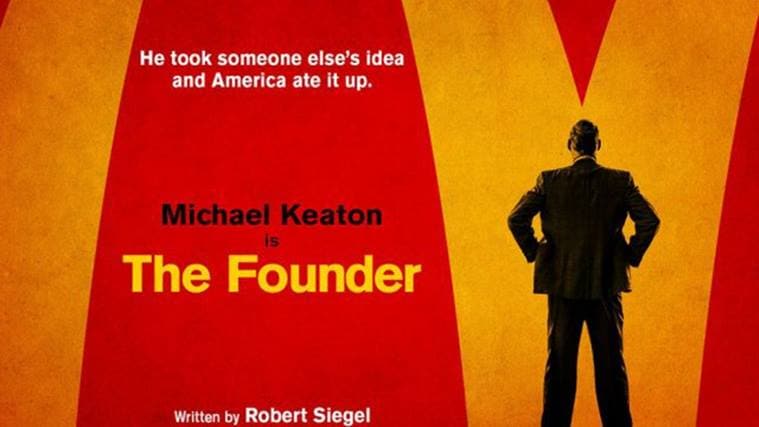“You don’t build Restaurant Empire acting like a timid mouse.”
In a world of zesty and succulent burger biopics, John Lee Hancock’s ‘The Founder’ is Filet-O-Fish, a plain meatless filmic sandwich that can be insipid for regular fast food audience. And yet, the film benefits from its neutral approach and tastelessness. It’s the delicate combination of odd ingredients that makes it a wholesome good old American meal.
The film starts with Ray Kroc (played by Michael Keaton) facing the camera, narrating his own story of how an ordinary milkshake machine salesman built the food empire that feeds 1% of world population every day. The lethargic owners of burger joints are least interested in his revolutionary product. But one day, by sheer luck, this Filet-O-Dream finds perfectly squishy business buns to fulfill his ambition. Kroc is amazed by the level of efficiency McDonald brothers have achieved in delivering food. And like a fraudulent musician, he not only steals their composition but also the title. The rest is history.

Michael Keaton is the filet of this film. Once again, he delivers an understated award worthy performance. Kroc is the man of ambition but he lacks the skill to fulfill his dreams. He is unsatisfied with his dreary whiny wife (Laura Dern), he is pissed at service of drive-ins. His ambition is fueled by his distaste towards the world. Kroc’s journey thoroughly follows Dan Harmon’s story structure in which protagonist steps out of comfort zone and enters unfamiliar situation driven by need or desire. However, the real heroes of this story are Dick (Nick Offerman) and Mac (John Carroll Lynch) McDonald, the brothers who practically invented fast food.
In one of the most remarkable scene, McDonald brothers can be seen choreographing ‘The Burger Ballet’ on the tennis court. It shows how two brothers came up with this revolutionary idea that changed the face of food industry. It was a dance, the perfect utilization of space and movement. A slight error and the whole kitchen would fall apart. This scene is also representative of how director John Lee Hancock shot the film in relatively short span of time and tight budget, utilizing every resource to its best. McDonald brothers have everything, talent, skills, but they lack the vision. They are happy with their local burger joint in the desert. That’s where Kroc steps in. He sees the potential in those golden arches, to become the symbol of America, like the flag and the cross.
The problem here is, by the time credits roll, the audience is neither disgusted by Kroc who is obviously a fraud, nor they feel sad for McDonald brothers who were robbed of not only their idea but also establishment. There are no thrills, no laughs, no overpowering moments. It is a plain story told in rather straight forward manner. But the film also benefits from its unsentimental approach and provides great insights into the inner working of fast food industry. In the end, it is the story of American dream, how a man can rise to power with sheer persistence.
★★★½


